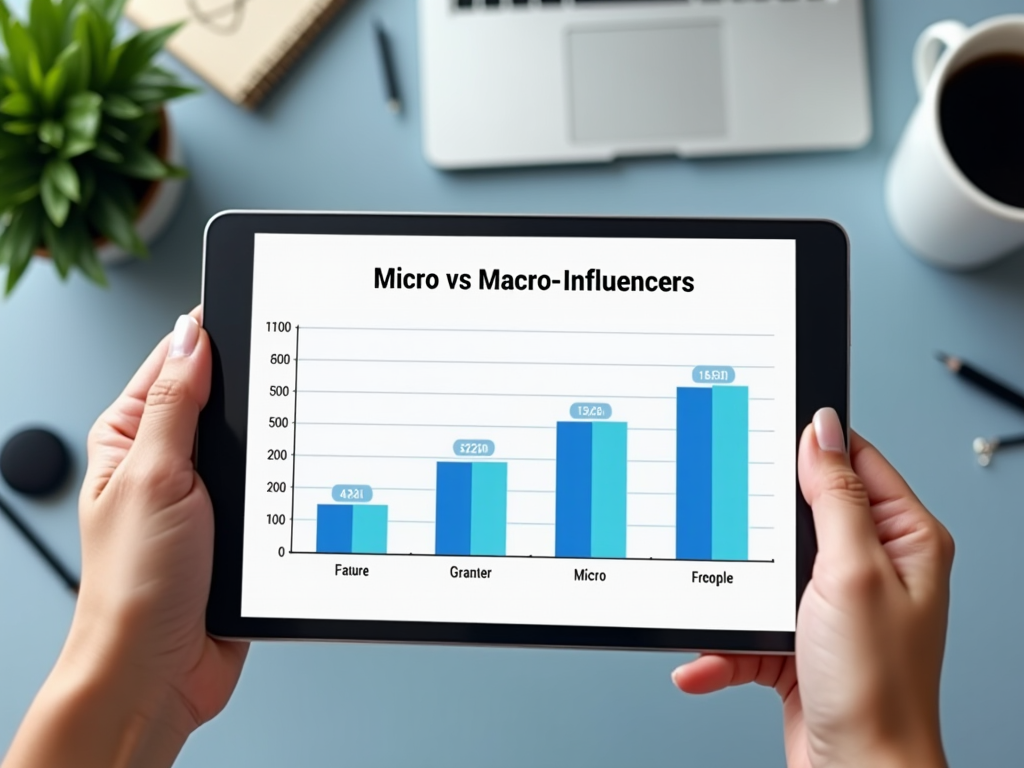Influencer marketing has revolutionized the way brands connect with their audience. In an age where consumers value authenticity and personal connections, the distinction between micro-influencers and macro-influencers has become crucial. Each type has unique advantages that can drive engagement and boost brand visibility in different ways. Understanding these differences can empower marketing strategies to align better with specific business goals. As we dive deeper, let’s explore the effectiveness of each category, backed by data, case studies, and expert opinions.
Defining Micro-Influencers and Macro-Influencers

Micro-influencers are content creators with a follower count generally ranging from 1,000 to 100,000. They tend to have a close-knit relationship with their audience, characterized by high engagement rates and meaningful interactions. Their followers often view them as relatable, leading to genuine connections that can translate into consumer trust. Characteristics of micro-influencers include:
- High engagement rates
- More niche-focused content
- Lower promotional costs
On the flip side, macro-influencers boast a significantly larger audience, typically exceeding 100,000 followers. Their reach is wider, allowing brands to tap into a broader demographic. However, the challenge lies in maintaining authentic engagement, as the larger audience can dilute personal connections. Key characteristics of macro-influencers are:
- Extensive reach across various demographics
- Potential for heightened brand visibility
- Established credibility in specific markets
Effectiveness of Micro-Influencers

Micro-influencers often lead the charge in engagement and authenticity. Their followers are generally more invested in their content, resulting in better interaction rates. Plus, these influencers are often more relatable, making their endorsements feel credible to their audience. When brands partner with micro-influencers, they not only save on costs but also forge a more personal connection with their target market. Here are some key indicators of their effectiveness:
- Higher engagement rates per post
- Lower costs associated with collaborations
- Strong trust and loyalty among followers
Additionally, case studies have shown that micro-influencers can lead to greater brand affinity and long-term customer relationships. For instance, brands focusing on a niche product often see better results when engaging micro-influencers who cater to that specific audience segment.
Effectiveness of Macro-Influencers
Macro-influencers, in contrast, offer vast reach and visibility, making them ideal for brands looking to capture a larger audience rapidly. Their established presence can lend credibility to new products and services, attracting attention from those who may not have encountered the brand otherwise. They can take advantage of trending topics and rapidly create buzz, often capturing viral moments that resonate well with wider audiences. Key advantages of macro-influencers include:
- Ability to drive fast brand awareness
- Immediate access to mass markets
- Cross-overs into various lifestyle segments
However, it is essential to recognize that the larger audience may not always translate into higher conversion rates. Engaging macro-influencers might lead to surface-level visibility without the deeper connections that micro-influencers provide.
| Type of Influencer | Typical Follower Count | Engagement Rate | Cost-Effectiveness |
|---|---|---|---|
| Micro-Influencer | 1,000 – 100,000 | High | Very Cost-Effective |
| Macro-Influencer | 100,000+ | Moderate | More Expensive |
Comparing Engagement Rates
When analyzing engagement rates between micro and macro-influencers, the numbers often speak for themselves. Micro-influencers generally boast higher engagement percentages, which can often exceed 10%, compared to macro-influencers, whose engagement might hover around 1-2%. Several factors contribute to these metrics, including audience loyalty, relevance, and the influencer’s niche.
Another crucial aspect is how niche audiences can significantly boost engagement. Here’s why targeting niche markets can matter:
- Higher relevancy to the followers
- Increased likelihood of word-of-mouth marketing
- Stronger community building around the brand
ROI Considerations for Brands
Understanding the return on investment (ROI) for each type of influencer is foundational for brands looking to maximize their marketing budget. Micro-influencers often provide higher conversion rates due to their personal touch and cultivated trust. Below are some tips for effective budget allocation:
- Assess goals to determine the right influencer type.
- Consider audience alignment with influencer’s followers.
- Explore long-term partnerships for sustained engagement.
Macro-influencers may require higher upfront investments but can lead to immediate visibility and brand association. It is essential to weigh the immediate benefits against the lasting influence micro-influencers can have on brand loyalty.
Conclusion
In summary, both micro-influencers and macro-influencers have their unique strengths and weaknesses. While micro-influencers generate higher engagement rates and authenticity, macro-influencers offer broader reach and potential for rapid brand awareness. Ultimately, the choice between micro and macro-influencers depends on a brand’s specific goals, target audience, and marketing budget. By understanding the platforms and nuances of each type, brands can craft a compelling influencer marketing strategy that aligns with their objectives.
Frequently Asked Questions
- What is the main difference between micro and macro-influencers? Micro-influencers typically have a smaller but more engaged audience, while macro-influencers have a larger reach.
- Which type of influencer is better for brand awareness? Macro-influencers may be more effective for broader brand awareness due to their larger follower base.
- Are micro-influencers more cost-effective? Generally, yes. Micro-influencers often charge less than macro-influencers and can provide high engagement rates.
- Can a brand benefit from using both micro and macro-influencers? Absolutely. Using a combination can help maximize reach and engagement while optimizing costs.
